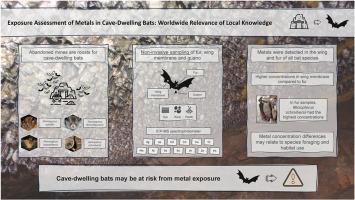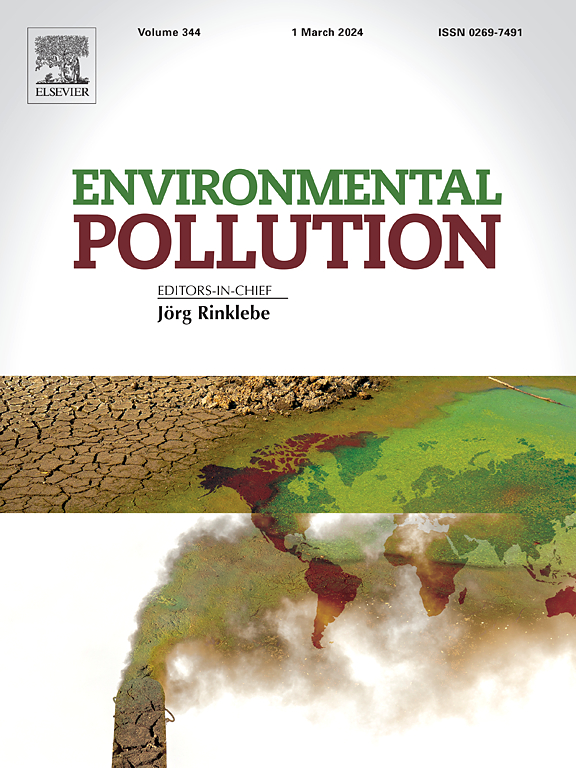Exposure Assessment of Metals in Cave-Dwelling Bats: Worldwide Relevance of Local Knowledge
IF 7.6
2区 环境科学与生态学
Q1 ENVIRONMENTAL SCIENCES
引用次数: 0
Abstract
Bat populations are decreasing worldwide, mainly due to anthropogenic influence, climate changes, urbanisation, agricultural intensification, and industrial exploitation of natural resources. Colonies have been displaced from caves and other natural roosts, leaving mines (including metal extraction mines) as key remaining roosts for cave-dwelling bats in many regions. Consequently, mines have become important for global conservation efforts. The persistence of metals in these environments might affect biota even after exploitation activities have ceased. This study investigates potential metal exposure in cave-dwelling bats roosting in abandoned mines. Non-invasive samples of fur, wing, and faeces from 140 individuals of four insectivorous cave-dwelling bat species (Rhinolophus ferrumequinum, Rhinolophus euryale, Rhinolophus hipposideros, and Miniopterus schreibersii) were collected in four abandoned mines in northern and central Portugal, frequently used as hibernation roosting sites. Soil, rock, and water samples were also collected in each mine to characterise the exposure source. Concentrations of 13 metals (As, Ag, Cd, Co, Cr, Cu, Mn, Ni, Pb, Se, Zn, Sn, and W) were measured by ICP-MS spectrophotometer. Metals were detected in the wings and fur of all bat species, confirming metal exposure. The highest concentrations were mainly found in the wing membranes. M. schreibersii presented the highest metal concentrations in fur. Differences in metal concentrations between species might be related to foraging behaviour and habitat use, linked to distinct anthropogenic activities. These results reinforce the importance of monitoring metal exposure in cave-dwelling bats roosting in abandoned mines, as this exposure may help to understand the decreases in bat populations and to support measures to prevent their decline.

求助全文
约1分钟内获得全文
求助全文
来源期刊

Environmental Pollution
环境科学-环境科学
CiteScore
16.00
自引率
6.70%
发文量
2082
审稿时长
2.9 months
期刊介绍:
Environmental Pollution is an international peer-reviewed journal that publishes high-quality research papers and review articles covering all aspects of environmental pollution and its impacts on ecosystems and human health.
Subject areas include, but are not limited to:
• Sources and occurrences of pollutants that are clearly defined and measured in environmental compartments, food and food-related items, and human bodies;
• Interlinks between contaminant exposure and biological, ecological, and human health effects, including those of climate change;
• Contaminants of emerging concerns (including but not limited to antibiotic resistant microorganisms or genes, microplastics/nanoplastics, electronic wastes, light, and noise) and/or their biological, ecological, or human health effects;
• Laboratory and field studies on the remediation/mitigation of environmental pollution via new techniques and with clear links to biological, ecological, or human health effects;
• Modeling of pollution processes, patterns, or trends that is of clear environmental and/or human health interest;
• New techniques that measure and examine environmental occurrences, transport, behavior, and effects of pollutants within the environment or the laboratory, provided that they can be clearly used to address problems within regional or global environmental compartments.
 求助内容:
求助内容: 应助结果提醒方式:
应助结果提醒方式:


